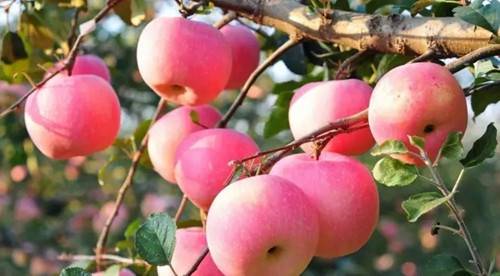
The apple has been a popular variety for well over a century, and for over 50 years it's been the most grown apple variety in the United States. But as Red Delicious apples have been bred to focus on the red part, they've become less sweet. The variety, which is usually the least expensive at the market, is often the least flavorful, too.
Slowly, other types of apples have been gaining ground. For the first time, the U.S. Apple Association is predicting the Gala apple will push the Red Delicious out of the coveted top spot.
And from where I'm sitting, it's about time.
In with the new: Gala
The U.S. is expected to grow 52.4 million units of Gala apples this year, an increase of 5.9 percent from 2017. (A unit is 42 pounds of apples.) For comparison, apple growers are expected to grow only 51.7 million units of Red Delicious apples this year, down 10.7 percent from 2017.
The U.S. Apple Association credits the Gala's increasing popularity to its "taste, texture and sweetness." Growers are fond of the variety because it's relatively easy to grow and a good producer. And, while Red Delicious previously was the top apple grown in the U.S, Gala has been the top consumer choice for a while now. The difference is that even as production of Red Delicious surged, many of those apples weren't eaten here. The variety makes up about half of all U.S. apples exported to other countries.
But Galas aren't the only ones making moves in the list of top apples. Other apples — many of them introduced in recent decades — have been increasing in popularity while the Red Delicious, and its yellow counterpart, Golden Delicious, have been declining in popularity with consumers. Here are the other apples topping the production list:
Granny Smith
Granny Smith holds firm in the third spot of the U.S. top apples list, coming in behind the now dethroned Red Delicious. If production of Red Delicious continues to decline, the sweet/tart green apple may surpass it.
This apple's signature green color makes them easy to recognize — and their tart flavor is what makes consumers love them. They work as well in a pie as they do as an afternoon snack.
Fuji
Fuji apples, a variety that originated in Japan in the 1960s and made its way to the U.S. in the1980s, are number four this year. They may get knocked out of their spot soon. While their production seems steady, the production of the fifth most popular apple — Honeycrisp — is growing, and if it continues to grow, it could surpass the Fuji soon.
Honeycrisp
Developed at the University of Minnesota in the 1960s as an apple that can withstand cold climates, this apple is a cross between a Macoun and a Honeygold. A honeycrisp is crisp and sweet, making it appealing. It's also more expensive than many other apples, yet its popularity is on the rise. The Honeycrisp knock Golden Delicious down a peg to sixth place. In 2017, growers produced 19.3 million units of Honeycrisp. This year, it's predicted production will reach 23.5 million units.





